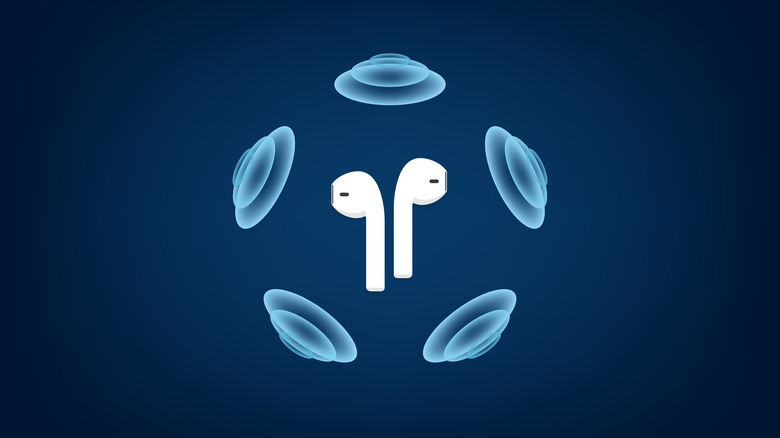What Is Spatial Audio, And Does It Sound Better?
Ever since Édouard-Léon Scott de Martinville first warbled "Clair de Lune" onto a wax cylinder, purveyors of sound technology and recorded music have been trying to replicate the full listening experience. Mixing, equalizing, and various deployments of speakers and other playback technology are all partial solutions to the single problem of allowing a listener to experience recorded sound with maximum flavor and nuance.
Of late, one of the most active areas of experimentation in high-fidelity playback has been headphone design. As wireless transmission technology like Bluetooth has become widely available, new engineering opportunities have arisen for in- and over-ear headphones. Apple, Sony, Sennheiser, and a number of other companies have developed different solutions for delivering the most immersive, nuanced audio possible for headphone users.
Apple in particular has implemented multiple strategies that range from simple buzzwords to genuine, full-scale design philosophies. One such strategy, which started as an Apple idea is "spatial audio." Here's the deal.
360-degree audio experience
According to What Hi-Fi?, the term "spatial audio" made its first public appearance in Apple's keynote at the 2020 Worldwide Developers Conference. At the time it was simply Apple's attempt to keep up with high-level surround sound audio solutions like Dolby's Atmos and Sony's 3D Audio for the PlayStation 5. Since then, the term has taken on wider usage. By the time Apple incorporated spatial audio into iOS and iPadOS 15, "spatial audio" had become the standard description of a particular audio solution.
In short, spatial audio is a technology that enables headphones to simulate, and in some cases surpass a speaker-based surround sound system. Instead of the older mono or stereo experience with headphones, in which sound is either mixed into a single unit, then split in half, or mixed into two groups, one for each ear, spatial audio is meant to create a full 360-degree listening experience. Apple's spatial audio system extends across their device ecosystem, with firmware built to support audio recorded for surround sound to speakers, output devices programmed to limit or boost certain frequencies, and even gyroscopes in headphones to track head movement and alter audio accordingly.
Spatial audio is now available through companies other than Apple, including Dolby, Sony, and even Microsoft through Windows Sonic. Crucially, recordings have to be made with spatial audio in mind to benefit from the technology. TV and movies are generally already recorded with surround sound in mind, so video will often benefit from spatial audio-enabled tech. Music files in Amazon Music, Apple Music, and Tidal also list whether they've been optimized for spatial sound systems.

